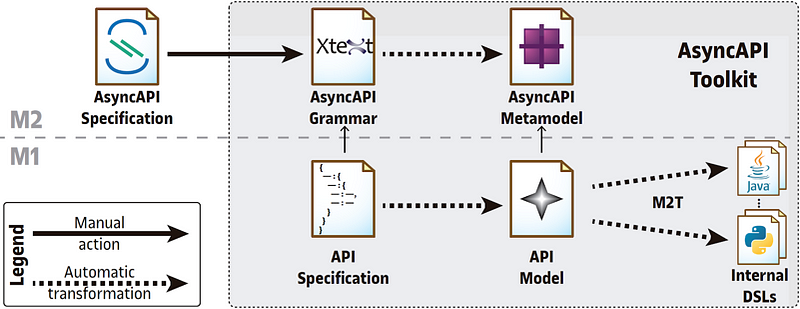AsyncAPI: The Future of Event-Driven API Development
AsyncAPI is an open-source initiative created in 2017 by Fran Méndez to address the challenges posed by event-driven architectures.

AsyncAPI is an open-source initiative created in 2017 by Fran Méndez to address the challenges posed by event-driven architectures.
It was inspired by the OpenAPI Specification (formerly known as Swagger) and aimed to provide a standard for defining and documenting event-driven APIs, covering a wide range of protocols like MQTT, AMQP, WebSockets, and Kafka.
The AsyncAPI community has increased, receiving support from numerous organizations and contributors.
Understanding AsyncAPI
AsyncAPI is a specification language, written in YAML or JSON, that provides a human-readable and machine-readable format for describing event-driven APIs.
It helps developers design, document, and understand event-driven architectures by offering a standardized definition of message-driven systems.
The specification can generate documentation, code, or even infrastructure components.
Key Components of AsyncAPI
The AsyncAPI specification includes several essential components that help developers describe their event-driven APIs, such as:
- Channels: Represent communication paths between the API and external systems. Channels can be used for publishing, subscribing, or both.
- Operations: Define the actions that can be performed on a channel, such as publishing or subscribing.
- Messages: Describe the data structure and content of messages exchanged on channels.
- Schemas: Define the data types and structures used in messages, often using JSON Schema or Avro.
- Servers: Describe the servers and protocols used for communication between the API and external systems.
Benefits of Using AsyncAPI
AsyncAPI offers numerous advantages to developers and organizations implementing event-driven architectures:
- Enhanced Collaboration: AsyncAPI allows teams to work together more efficiently by providing a standardized, easy-to-understand format for API documentation.
- Improved API Design: The specification helps developers think through their API’s design, resulting in more consistent and robust event-driven architectures.
- Code Generation: AsyncAPI can generate boilerplate code, speeding up development and ensuring adherence to the defined API specification.
- Automated Documentation: Developers can use AsyncAPI to generate up-to-date, interactive documentation that is easy to navigate and understand.
- Protocol Agnostic: AsyncAPI supports various messaging protocols, making it a versatile tool for describing event-driven APIs.
AsyncAPI in Action
Several open-source tools and libraries have been developed to support AsyncAPI, including:
- AsyncAPI Generator: A command-line tool for generating code, documentation, and other artefacts from an AsyncAPI document.
- AsyncAPI Playground: An interactive web-based tool that allows users to create, edit, and visualize AsyncAPI documents.
- AsyncAPI React Component: A React component for rendering beautiful, interactive documentation from an AsyncAPI document.
Conclusion
AsyncAPI is a game-changer in event-driven API development, offering a standardized approach to documentation and specification that can vastly improve collaboration, design, and efficiency.
Did you like the article? Leave a comment!
Follow me on Medium, LinkedIn, and Twitter.
All the best,
Luis Soares
CTO | Head of Engineering | Cyber Security | Blockchain Engineer | NFT | Web3 | DeFi | Data Scientist
#api #async #eventdesign #eventdrivenarchitecture #architecture #software #architecture #application #softwaredevelopment #softwareengineering



